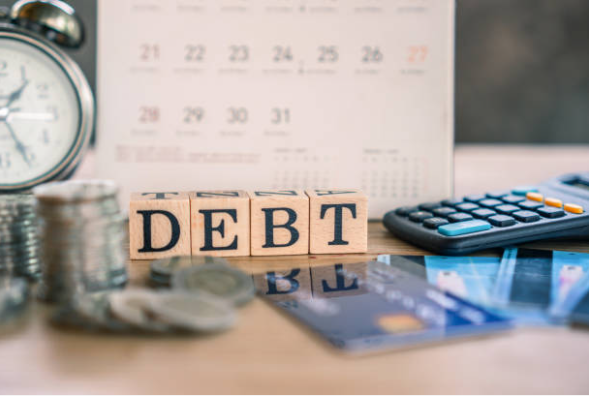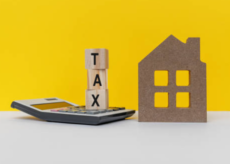5 Steps to Consolidate Debt with a Personal Loan

So you’ve decided that consolidation is your best bet for getting your debt under control. Well, you need to know that consolidating debt through a personal loan translates into simplifying your payments and reducing your debt faster.
This article compiles five steps to consolidate debt with a personal loan, starting with your credit check and ending at loan closing. Follow us on this walk through the process of credit consolidation with a personal loan.
1. Credit check
A bad credit score (300 to 629 on the FICO scale) doesn’t mean you’re automatically disqualified for all loans, but consumers with good to excellent credit scores (690 to 850) are more likely to have their applications approved, and not only that, but at the best rates.
Consequently, ideally, the new debt consolidation loan should have a lower interest rate than the combined interest rate of your current debts. Why? Because a lower rate reduces the total cost of your debt and shortens the repayment period.
However, if your credit score is not at a level that allows you to obtain a lower rate, take the time to strengthen it. To do this, do the following:
(i) Catch up on late payments
Late payments are reported to the credit bureaus within 30 days of delinquency and can lower your score by 100 points or more. If you’re within the 30-day window, you still have time to make payments.
(ii) Check for errors on your credit report
Errors on your credit report, such as payments applied to the wrong debts or accounts incorrectly marked closed, are not uncommon and can hurt your score as well. Therefore, it’s essential that you review your credit reports, and if you find errors, contact the appropriate bureaus to dispute them.
(iii) Pay off small debts
The debts you have account for 30% of your credit score, so it is recommended that you pay off as many as you can before consolidating them. For example, it’s a good idea to start with high-interest credit cards. Doing this also improves your debt-to-income ratio, which can help you get a lower rate on the consolidation loan.
2. Make a list of your debts and payments
The next step, but no less important, is to make a list of the debts you want to consolidate. This can include credit cards, store cards, payday loans, and other high-interest debts. In this regard, you’ll want your loan proceeds to cover the total amount of your debt.
Once you’ve done this, add up the amount you pay each month on your debts, and check your budget to see if there are any spending adjustments you need to make to keep up with the payments. The new loan should have a lower rate and a monthly payment that fits your budget, so you should build a payment plan that takes this into account.
3. Compare the available options
It’s time to start shopping for a personal loan. Online lenders, credit unions, and banks offer personal loans for debt consolidation.
Online lenders offer borrowers all ranges of credit, although the loans can be expensive for those with bad credit. Most allow you to pre-qualify so you can compare customized rates and terms, without affecting your credit score.
Bank loans work best for those with good credit, and customers with an existing banking relationship may qualify for an interest rate discount.
Credit unions are non-profit organizations that may offer lower rates to borrowers with bad credit. But before applying for a loan you need to become a customer of the institution, and many credit union loans require a hard credit application, which can temporarily hurt your score.
On the other hand, look for lenders that offer direct payment to creditors, which simplifies the consolidation process. How does this work? Well, after you get the loan, the lender pays your creditors directly at no additional cost.
Other features to consider include: reporting payments to the credit bureaus (on-time payments can help your credit score); flexible payment options; and financial support.
4. Apply for the loan
To proceed with the loan process, lenders will ask for several documents, including proof of identity, proof of address, and income verification.
Be sure to read and understand the fine print on the loan before you sign, including any extra fees, prepayment penalties, and whether payments are reported to the credit bureaus. If you don’t meet the lender’s requirements, consider adding a cosigner with good credit to your application. This may help you get a loan you wouldn’t qualify for on your own.
5. Close the deal and make payment
Once you’ve been approved for the loan, the process is almost complete.
As explained above, if the lender offers direct payment, it will disburse the loan proceeds among the creditors, thus paying off your old debts. Next, you will need to check that your accounts have a zero balance, or contact each creditor to make sure the account balance are fully paid.
If the lender does not pay your creditors directly, then you must pay each debt with the money deposited in your bank account. Do this immediately to avoid additional interest on your old debts, and to eliminate the temptation to spend the loan money on something else.
Finally, within 30 days, make your first payment on your new consolidation loan.
There are several pros and cons to using a personal loan to consolidate debt, so it’s important to understand them before deciding if it’s the best alternative for your situation.
Advantages of consolidating debt with a personal loan
- You only make one payment each month to a single lender, so managing your finances is more manageable and simpler.
- You may be able to reduce the amount of interest you pay on your debt. In addition, rates are more competitive for loans over $7,500.
- Reducing the amount of interest will help you pay off your debt faster.
- Monthly payments on personal loans are fixed, making it easier to manage your budget.
- You have the option of choosing how long you need to repay the loan, usually up to five years.
- Paying on time each month can help you improve your credit score.
Disadvantages of consolidating debt with a personal loan
- Not all lenders will allow you to use a personal loan to consolidate debt, so check before you start.
- The most competitive personal loan rates are only offered to those with good credit scores, so if yours isn’t up to par, you may be offered higher rates.
- Depending on the interest rate you’re offered, your monthly payments could end up being higher than your original debts.
- Payments are not flexible, so any delays could hurt your credit score.
- The longer the term of the loan, the more you’ll pay in interest.
- Keep in mind that you may have to pay a prepayment fee on one or more of your existing debts if you offset them with a new personal consolidation loan.
Author Bio:
I am Nikesh Mehta, owner and writer of this site.

I’m an analytics and digital marketing professional and also love writing on finance and technology industry during my spare time. I’ve done online course in Financial Markets and Investment Strategy from Indian School of Business. I can be reached at [email protected] or LinkedIn profile.



